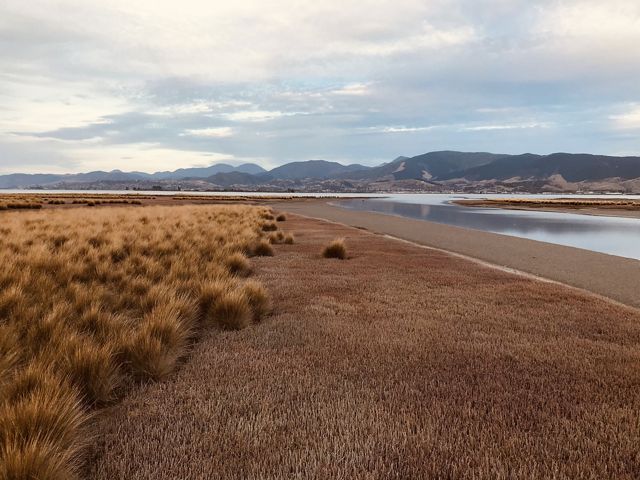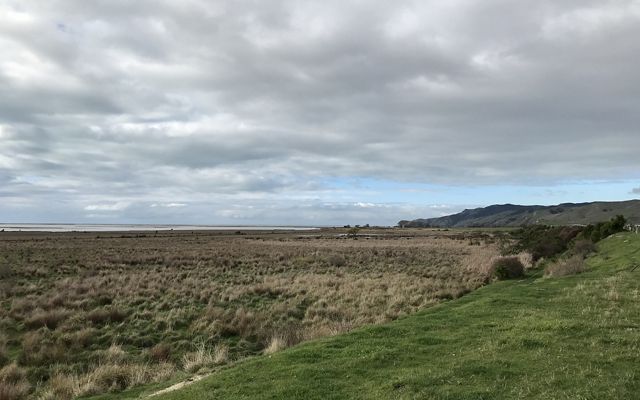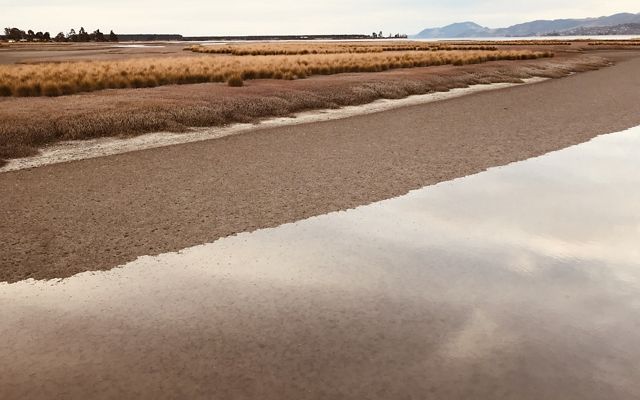A comprehensive research report into coastal wetland blue carbon has identified a range of actions that can help accelerate coastal wetland restoration in New Zealand.
The Nature Conservancy Aotearoa New Zealand (TNC NZ) today released the Coastal Wetland Blue Carbon Policy Research in Aotearoa report—a research report commissioned by TNC NZ and Ministry for the Environment (MfE) intended to explore the policy, legal and market conditions that would be needed to enable coastal wetlands projects to result in blue carbon credits.
“Blue carbon markets are relatively new compared with markets for carbon sequestration on land, such as tree planting, but they are expected to have great potential as part of the global demand for nature-based pathways to address climate change,” said Abbie Reynolds, country director, TNC NZ.
Quote: Abbie Reynolds
Coastal communities can reap benefits from healthy coastal wetlands through increased resilience, enhanced biodiversity, cleaner water and opportunities for eco-tourism.
"We’re excited to be working in this area and exploring the role that investing in nature-based solutions via carbon credits can play to avert the climate crisis. Other solutions include reducing emissions, protecting and restoring natural ecosystems, developing and implementing innovative technological solutions, and investing in and deploying renewable energy to deliver the majority of the mitigation needed.”
Revenue from blue carbon credits could also help support landowners at restoration sites.
“Coastal communities can reap benefits from healthy coastal wetlands through increased resilience, enhanced biodiversity, cleaner water and opportunities for eco-tourism. They can also enjoy the social and cultural benefits from living in a healthy functioning ecosystem.”

The report also recommends ways to address the existing policy, regulatory and legal complexities so that New Zealand projects could participate in carbon markets at scale. The report was authored by Jacobs, Environmental Accounting Services, Anderson Lloyd and Conservation International.
The authors identified the following priority recommendations:
- Develop a national blue carbon roadmap or strategy, with suggested pathways for enabling blue carbon projects at scale.
- A Māori-led study into the barriers, opportunities and benefits of blue carbon for Māori.
- Government and Māori to develop clear guidance and/or regulatory tools to grant carbon rights in the coastal marine area.
- Government to create an enabling environment for voluntary markets to operate in Aotearoa New Zealand, including Paris Agreement Article 6 policy clarity.
The report explored the implications of including blue carbon in New Zealand’s GHG inventory and Nationally Determined Contributions and whether the best place for these projects would be voluntary markets.
Read the Report
Coastal Wetland Blue Carbon Policy Research in Aotearoa, Sept. 2024
Download the PDFIt also investigated how changing the regulatory environment could impact on the development of blue carbon projects and what we can learn from established blue carbon accounting schemes overseas. The research suggested voluntary carbon markets would be a better option for pursuing carbon credits from coastal wetland restoration, compared to the New Zealand Emissions Trading Scheme.
“Promoting the restoration of coastal wetlands via blue carbon credits can contribute to our collective climate response by helping New Zealand adapt to the impacts of climate change and supporting our communities through the transition,” said Olya Albot, project manager for nature-based solutions at The Nature Conservancy Aotearoa New Zealand.
“Addressing policy barriers and creating an enabling environment has the potential to accelerate pilot projects already underway in New Zealand and support the uptake of blue carbon projects in New Zealand for the international voluntary market, at scale,” Olya Albot said.


More Information
Blue carbon ecosystems, such as coastal wetlands, face threats from rising sea levels and extreme weather events. However, coastal wetlands help mitigate climate change by converting CO₂ emissions into plant biomass, potentially more effectively than forests. Coastal wetlands also help protect communities against storm surge and sea-level rise by providing natural protection.
Six priority research themes around the policy and legal landscape were:
- Greenhouse Gas Inventories and Nationally Determined Contributions
- Carbon markets and trading
- Environmental policy and law
- Coastal land tenure and carbon rights
- Blue carbon schemes and methodologies
- Benefits of blue carbon projects
The report also outlined opportunities and implications of including coastal wetlands in New Zealand’s GHG inventory and NDC, including:
- Creating a more complete inventory, including a more accurate representation of the country’s carbon emissions and sinks;
- The opportunity for New Zealand to lead by example regarding conservation and sustainable use of coastal and marine ecosystems and offer insights for the Pacific region.
Although coastal wetland blue carbon is not included in New Zealand’s national Greenhouse Gas (GHG) inventory, the opportunity to restore coastal wetlands is mentioned in the country’s Emissions Reduction Plan, as well as in the new Climate Change Strategy as nature-based solutions.
Any blue carbon projects would need to demonstrate high integrity and meet independently assured standards such as Verified Carbon Standard (VCS).
The Nature Conservancy is a global conservation organization dedicated to conserving the lands and waters on which all life depends. Guided by science, we create innovative, on-the-ground solutions to our world’s toughest challenges so that nature and people can thrive together. We are tackling climate change, conserving lands, waters and oceans at an unprecedented scale, providing food and water sustainably and helping make cities more sustainable. The Nature Conservancy is working to make a lasting difference around the world in 81 countries and territories (40 by direct conservation impact and 41 through partners) through a collaborative approach that engages local communities, governments, the private sector, and other partners. To learn more, visit nature.org or follow @nature_press on X.
